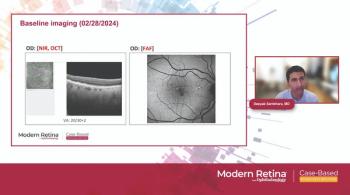
Geographic atrophy treatment: High attrition rates challenge long-term patient adherence
Two FDA-approved geographic atrophy treatments show significant patient dropout, with 45% discontinuation by 18 months, driven by baseline vision, CNV, and lack of immediate visual improvement.
In a comprehensive study of
The retrospective multicenter database review, using Vestrum Health data, examined 20,000 eyes from 15,000 patients. Key findings revealed significant treatment attrition rates, with 25% of patients discontinuing within 6 months and nearly 45% dropping out by 18 months.
Baseline patient characteristics showed complex challenges: approximately one-third of eyes had study eye choroidal neovascularization (CNV), 40% had fellow eye CNV, and over 50% experienced subfoveal involvement. Average visual acuity was around 55 ETDRS letters (20/80 vision).
Three primary risk factors predicted treatment discontinuation: study eye CNV, fellow eye CNV, and extremely poor vision (20 letters or less on ETDRS). The research highlighted the unique challenges of GA treatment, where patients do not experience immediate visual improvement, unlike anti-VEGF treatments.
Market dynamics also influenced treatment patterns, with fewer new starts correlating with events like the ASRS ReST committee's position statement and potential third-party payer access issues.
Sambhara emphasized the need to create a "culture of compliance" for GA patients, recognizing that traditional motivation strategies are ineffective in a progressive disease context. The study underscores the importance of longitudinal monitoring and developing innovative approaches to maintain patient engagement in long-term treatment.
"In some respects, large database studies can make informed decisions for how we understand trends that we may not be realizing on the individual practice level, but if we see these global trends start to emerge, it helps us identify where gaps exist and how we can potentially bridge those gaps," Sambhara said. "And so for every problem that exists, it's actually an opportunity that's created. In the world of geographic atrophy, it's difficult because we don't have instant gratification. The best revision is ever going to be is today, because it's a continually progressive disease."
This research provides crucial insights into real-world treatment challenges and opportunities for improving patient care in geographic atrophy management.
Newsletter
Keep your retina practice on the forefront—subscribe for expert analysis and emerging trends in retinal disease management.








































